When it comes to protecting your interests – whether it’s to help you get out of a ticket, prove your innocence in a car accident, or prevent insurance fraud – a picture is worth a thousand words. Or, in this case, a video. Basically, if you own a vehicle, you’re going to need a dash cam. Of course, not all dash cams are created equal. There are a lot of options in the market with a variety of features. What will work best for you will depend on what you plan on using the dash cam for? Since sorting through the various products can become quite overwhelming, we’ve decided to help you out. After hours of research and testing, we’ve compiled a list of the best dash cams for most drivers.
Top 11 Dash Cams Of 2020 Reviewed
1. YI Smart Dash Camera
 Best Dash Cam With Lane Departure Warning
Best Dash Cam With Lane Departure Warning
The Y1 Dash Cam also features a 165-degree field of view which allows you to record 3 lanes. It also has G-sensor technology, automatically saving any footage that it records if it detects a collision. It has HD video and decent night vision with 1920x1080p at 60fps. It has a 16:9 large LCD screen (2.7 inches wide) and intuitive controls. All good things, especially at this price point.
But that’s not even the highlight. This little baby comes with an ADAS – Advanced Driver Assistance System. What that means is that the dashcam has the technology to “sense” if you are departing from your lane or getting too close to the vehicle in front of you. These are safety features that would make this dash cam an ideal purchase for new drivers, particularly teen ones.
Plus, this comes with built-in WiFi that allows you to share video footage from the dash camera using the app. However, it doesn’t seem to capture license plates well even in daylight. The dash cam doesn’t have a low profile design. And this does not come with a memory card.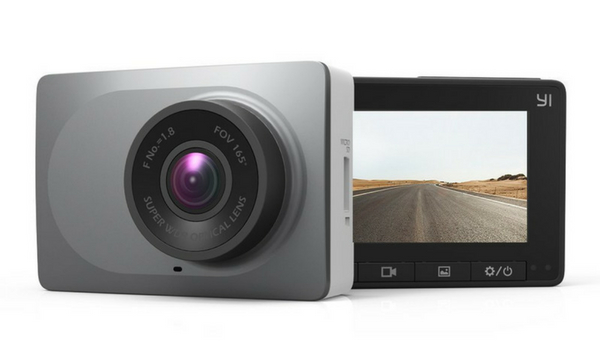
Pros:
- Intuitive controls
- ADAS
- Built-in WiFi
Cons:
- Can’t capture license plates
- Not low profile
- No memory card included
2. Z-Edge Z3
 Best Dash Cam Money Can Buy
Best Dash Cam Money Can Buy
The Z-Edge Z3 features a 150-degree field of view and 2560x1080p Super HD resolution at 30fps. With its OV4689 Color CMOS Image Sensor and HDR night capture, you’re never going to miss a license plate ever again, even in low-light conditions. Aside from its excellent video capabilities, this dash cam comes with a parking mode. It has a motion detector which automatically starts recording when the camera senses movement and pauses when no motion is detected.
This feature is powered by the built-in battery. The device is easy enough to install and even comes with its own 32GB memory card as well as clips to help make the unsightly wire disappear from view. However, it is not easy to remove once installed which means you may have to leave it mounted at night. And the screw that attaches the dash cam to the mount is hard to tighten which means the camera’s position can move, causing the angle of the camera to change. Plus, the dash cam does not have a low profile which may block your view.
Pros:
- Comes with 32GB memory card
- Parking mode
- Excellent video quality
Cons:
- Not easy to detach or unmount
- Hard to tighten the screw
- Not low profile
3. WheelWitness HD PRO Premium Dashboard Camera
 Best Night Vision Dashboard Camera
Best Night Vision Dashboard Camera
We are pleased to present the WheelWitness HD PRO Premium Dashboard Camera. It is a coming together of all the latest technologies in imaging. Using the Ambarella A7LA50 processor and a super-wide lens providing a 170° frontal visual coverage. It captures anything and everything that happens in ultra-clear High Definition 2K with 2304 by 1296 pixel resolution. You can view everything that’s going down with the 3” color LCD display. There are four buttons with two on each other side of the screen. They are there for your interactive needs with the device.
However, sometimes the impeding factor isn’t physical obstacles in front of you, but the state of the lighting of your immediate environment. This is why in spite of differences in light, for instance, when traveling through tunnels or parking your car in a shaded place, WDR/HDR technology compensates for bright and dull spots in a single shot/frame. All this translates to optimal night vision when driving through dark places.
Pros:
- Easy to install
- The quality of the recording is great
- It is well packaged
Cons:
- The suction cup doesn’t stick for too long
- Some devices didn’t come with the SD card included
- Difficult to work through the camera’s modes
4. Rexing V1 Car Dash Cam
 Best Dash Cam Without Gps
Best Dash Cam Without Gps
The Rexing V1 Car Dash Cam is just a basic dash cam but it’s not one of the cheapest on our list. Why then is it number 1? Well, it’s because it does have a lot of the features that the average everyday commuter would want to have and performs pretty great too. It has a very low profile which means it won’t draw undue attention. Plus, it won’t be blocking your It comes with a 170-degree wide angle lens and full HD video (1080p at 30fps) with its Sony IMX323 image sensor.
The dash cam features a G-sensor which means it’ll save any recording if it detects a collision. And it can operate even in extreme temperature conditions. However, the adhesive doesn’t hold up very well in very hot weather so you might want to keep a stock of adhesives handy or just buy the suction mount. The memory card is not included. And the video isn’t as good in low-light conditions.
Pros:
- 170-degree wide angle
- 1080p at 30fps
- Low profile design
Cons:
- Adhesive doesn’t hold up well in hot weather
- Memory card not included
- Not so good in low-light conditions
5. Z-EDGE Dash Cam Front and Rear 4.0″ Touch Screen Dual Dash Cam
If you want a dash cam with all the bells and whistles, then you shouldn’t look further than the Z-Edge T4. This dash cam comes with a 4-inch sensitive touch screen that enables you to easily operate the device.
Navigating the menu, locking video files, and taking a snapshot doesn’t require a whole lot of effort or tech skills. In addition, this doesn’t just feature a front camera. It also includes a rear camera so you’re covered front and back. Plus, the 155-degree field of view covers 4 lanes front and back, reducing any blind zones. The 1080p video is crystal clear even at night.
With its built-in G-Sensor, any collisions are detected and the video is automatically protected from erasure. This dash cam even has a parking mode which turns on when a vibration is detected due to the built-in battery. You also get a 32GB memory card with this device. However, there have been reports that the built-in battery doesn’t hold a charge long. And when plugged into your laptop, the controls on the touchscreen are not accessible. Plus, there’s no GPS feature.
Pros:
- 4-inch sensitive touchscreen
- Parking mode
- Wide FOV
- Great UI
- Night mode quality video
Cons:
- The built-in battery doesn’t hold a charge for long
- No GPS included
- Controls are inaccessible when the device plugged into the laptop
6. KDLINKS X1 Dash Cam
 Best Dash Cam At Night
Best Dash Cam At Night
The X1 Dash Cam is another crowd-favorite but with a higher price tag. However, it does come with full HD video 920*1080 at 30 fps, a large 2.7-inch screen, a 165-degree angle, and a Wide Dynamic Range system. The WDR system provides superior night vision so you never have to worry about driving around at night. The built-in GPS module records the GPS data right into the video feed.
And you can even check the location, speed, and route of the vehicle on Google Maps using the software included with the dash cam. What we do love is that this already comes with an 8GB micro SD card so you can use it right out of the box. And the camera swivels so you can adjust the angle it records if necessary. However, the suction cup doesn’t work as well as we’d like; you may experience the dash cam falling a few times. Also, having to reset the date & time every time you don’t use the dash cam for a couple of days.
Pros:
- Decent night vision
- Built-in GPS module
- Comes with its own memory card
Cons:
- Suction cup could be better
- A bit pricey
- Frequent resetting of date & time
7. Roav Dash Cam C1
 Best Dash Cam With Motion Detection
Best Dash Cam With Motion Detection
The Roav DashCam C1 has a lot of the features that we love in a dash cam. It uses an advanced Sony Exmor CMOS sensor, a wide angle lens, Wide Dynamic Range technology, and 1080p resolution. All of these combined ensures that you capture everything that happens in front of you (as much as 4 lanes in traffic) in great detail, even under low-light conditions.
It features a motion-activated gravity sensor which automatically starts recording when the car is bumped or moved, even when turned off. It has extreme temperature resistance, up to 149℉. And it has built-in WiFi which makes it easy for you to share footage using the Roav app.
It also has a very slim profile which means you can install it behind your rearview mirror and not have anything obstructing your view. For the price, this is a really good dash cam for the average commuter. However, the controls aren’t intuitive and it can be hard to navigate the settings when the dash cam is mounted. The manual isn’t all that clear either. And you can’t angle the camera from side to side, just up and down.
Pros:
- Motion-activated gravity sensor
- Wide field of view
- Slim profile
Cons:
- Controls are not intuitive
- Hard to adjust camera when mounted
- Can’t swivel the camera from side to side
8. Vantrue OnDash N2 Pro
The Vantrue OnDash N2 Pro is a dual dash cam which records the front of the vehicle and the interior, making it an ideal choice for drivers of rideshare programs like Uber. The image sensors, the advanced Sony Exmor IMX323 sensor, and the OV4689, provide crystal clear images. The field of view in front is 170 degrees while the rear camera provides a 140-degree view.
The dual camera produces 1920x1080p video at 30fps, The HDR system along with the 4 IR lights and the F2.0 lens of the rear camera enables the camera to capture clear details even at night. This dash cam even comes with a parking monitor. And in case you need it, the built-in microphone and speaker will capture all the audio in the car. However, this doesn’t come with a micro SD card.
The mechanism that attaches the camera to the mount loosens up quickly which causes the camera to move around, losing the desired angle. And if you want to use the parking mode, you’ll need to buy the hardware kit which costs an extra $13 or get an external battery which also costs more money.
Pros:
- Built-in microphone and speaker
- The rear camera comes with IR lights
- Wide field of view both indoors and outside the vehicle
Cons:
- Ball joint mechanism in mount loosens up fairly quickly
- No micro SD card included
- Hardwire kit costs extra
9. APEMAN Dash Cam
 Best DVR Car Driving Recorder
Best DVR Car Driving Recorder
From one of the most reputed names in designing premium camera products, APEMAN, comes their own answer to the dash camera problem. It does all its recording duties using the High Resolution 1080 Pixel Full High Definition Lens. Clarity doesn’t mean much if the field of view is limited, so this is why the engineers at APEMAN made this camera to support a full 170° of frontal vision. The recorder uses a wide-angle lens to capture all this visual area. Not only does it capture more detail than some other models out in the market, but also provides this ultra-wide view-field with reduced blind spots.
You can’t manually operate this dashcam while driving. This is why the manufacturer has made installation easy with the setup and mounting taking about five minutes. Once in place, the camera’s large, LCD, 3” screen delivers the best picture quality while driving at high speeds. In accordance with its design policy of restoring accident scenes, the APEMAN dash cam boasts a built-in G-sensor that will ensure footage is locked in case of a collision or sudden shake. What this does is ensure the video won’t be overwritten even in the case of loop recording.
Pros:
- It comes in an ultra-sleek design
- Navigating the camera’s menu is easy
- The customer service is exemplary
Cons:
- Video quality is terrible in the dark
- The user manual is non-definitive
- Collision detection is so sensitive that shutting the trunk or doors will trigger it
10. VATENIC V-02 1080P Full HD Dual Dash Cam
 Best Front and Rear Dashboard Cameras
Best Front and Rear Dashboard Cameras
The VATENIC V-02 1080P Full HD Dual Dash Cam has a front camera that boasts 1080 Pixels of pure HD clarity. The thing is, so do most of the other dash cams in our compilation. Vatenic, as a serious name brand knew they had to bring their own unique addition to give their camera that competitive edge. In addition to the powerhouse that is the front cam, they have also included a waterproof rearview monitor. In spite of the dual camera feature, the recording wouldn’t do much if there wasn’t a screen to view the roads with. This is why there’s a 2.2” TFT-LCD screen with associated buttons for simple operation.
Vatenic have optimized their cameras with advance sensors that are coupled with six layers of glass lenses with F1.8 aperture. The WDR functionality improves camera shots made in the night, making them brighter while reduces exposure under bright light. Motion detection sensors have also been incorporated into the dashcam that responds to motion occurring on the front of your car. When the car’s hit, the G-Sensor will be triggered, turning the dashcam on which will then power on, record a short clip, save it, and then turn off automatically.
Pros:
- The suction on the mount is strong
- Offers great value for money
- Quality of the build is good
Cons:
- Difficult to install the rearview camera
- The SD card is inserted into a phone or connected to a computer to view the video
- Rear cam has lower video quality
11. Pruveeo F5 FHD 1080P Dash Cam
From a company knowing for standing behind its products, the Pruveeo presents its 1080P dash camera. What stands out the most (or the least) is its low-profile design. The camera has been made to be discreet to witness all the happenings on the road ahead. No chance of it being easily noticed by thugs in case of a carjacking. It has been configured for loop recording. This means that in case the SD card gets full, any new recording will be taped over the oldest ones. It does so automatically.
This little device starts working as soon as the engine is turned on and goes dark after the engine’s off. This seamless operation makes sure there are no gaps in the recording at any time. It this means that you need an external connection to link it with your car’s dashboard power outlet. It does have an inbuilt battery, but it’s only 320 mAh in size. The juice on it is only enough to capture video in the case of an accident/emergency. Due to the nature of its use, the battery build is high-quality Li-polymer that can handle both high and low temperatures.
Pros:
- It is easy to install and remove the mount from your windshield
- Small enough to not present a distraction when driving
- Saves the last recorded video in case of an accident
Cons:
- The user manual could have been written clearer
- Its Wi-Fi feature doesn’t work
- Configuration of the SD card is incompatible with Mac OS
How to Choose the Best Dash Cam: The Ultimate Buying Guide
Accidents are often cases of ‘he said, she said.’ Each driver is bound to have a memory of the accident that directly conflicts with the other’s recollection. Eyewitnesses aren’t so reliable either, even the impartial ones. Which is why a dash cam is such a smart investment. Of course, that’s not the only reason for having a dash cam. It can help protect you from insurance fraud.
It can even help you monitor your teen’s driving and/or catch any acts of stupidity that occurs on the road (or inside the car). It can even record any exciting, weird, or rare sightings that you may come across while driving. There are many reasons for investing in a dash cam which is why there are also a variety of models to choose from.
Because there isn’t going to be one best dash cam for all situations, choosing one that is perfect for you can become complicated. This buying guide should help you learn more about the different designs and features of dash cams to help you get a better idea of what best fits your needs and specific situation.
Types of Dash Cams
Dash cams come in different designs to enable them to work better in a particular situation. Knowing the types of designs available will enable you to see which ones fit your needs and situation best.
Single Lens Dash Cam
Like a regular camcorder or smartphone, this type of dash cam is made up of one camera that is typically mounted on the windshield or the mirror. Some dash cams can be mounted on a dashboard. The main purpose of this type of dash cam is to record whatever is happening in front of the vehicle. Take note that a windshield-mounted dash cam can partially block your view and are illegal in some states. If that’s the case with you, you can opt for a rear view mirror-mounted dash cam.
Multiple-lens Dash Cam
As the name suggests, this type of dash cam features multiple cameras that will enable you to record different angles or views. You can have one camera facing the front while another is facing the rear, which is ideal if you want to record what’s going on inside the car. For example, parents of new, inexperienced teen drivers as well as drivers of rideshare programs may want dual-lens dash cams which records the outside as well as the inside of the car.
Some multiple-lens dash cams even feature a 4-camera setup which records the view from the sides of the vehicle aside from the usual front and rear. Take note that multiple cameras will mean a higher price tag and possible mounting issues. Make sure that you will be able to mount a rear or side camera in your vehicle before buying a multiple-lens dash cam.
Some dual lens dash cams will have two separate camera enclosures which mean two separate mounting positions. This is ideal for recording what’s in front of the car and what’s behind it. An added benefit to this is that the rear camera can serve as a backup to the front camera if necessary. Other models like the Vantrue OnDash N2 Pro will feature the two cameras in one housing – one recording the front and one recording the inside of the vehicle.
Dash Cam Features
Once you’ve decided between the two types of dash cams, you’ll need to check out which features are best suited to meet your needs.
Battery Options
Most dash cams are powered by your car’s battery by plugging it into the 12-volt outlet (your car’s cigarette lighter). Some models can be connected directly to the car’s battery. A lot of dash cams would also feature an internal lithium-ion battery which allows the camera to continue recording for a short amount of time while unplugged. However, batteries are susceptible to changes in temperature which is why some manufacturers opt to use capacitors instead. Capacitors are much more reliable in extreme temperature conditions. But using one means that your dash cam will be unable to continue recording when it’s unplugged.
Resolution and Image Sensor
A picture is worth a thousand words… if that picture is clear enough that you can discern a lot of the important details (such as the license plate of the car that just sideswiped you) even when in motion. At the very least, you want the dash cam to record at 1080p like the Rexing V1 Car Dash Cam. The higher the resolution, the better. You’ll also want the image sensors to be able to capture clear details in various lighting and weather conditions. Just keep in mind that the better the image quality, the bigger the file size. And dash cams are limited to the storage space of their memory cards.
Field of View
Field of view refers to how much of the scene the camera can capture. The narrowest FOV is 120 degrees which give you a closer look at what’s right in front of you but you may miss things at the sides. A 180-degree FOV may seem the better option since it captures a much wider scene, perfect if you want to video scenic landscapes and vistas. However, a wider FOV will make things in front of your car look farther away than they actually are. If you want a balance between center details and width, experts recommend the 160-degree FOV.
Mounting Options
There are typically two ways you can mount a dash cam – suction and adhesive. Some models will only feature one mounting option while others will allow you to choose. Suction mounts are vulnerable to heat and humidity which can cause the dash cam to fall (when mounted on the windshield). Because of their design, dash cams will tend to hang low from a suction mount which can interfere with your view. However, these are much easier to adjust and aim. They can also be removed quickly if necessary (such as when you’re switching cars or want to park the car overnight on a street).
Adhesive mounts are less likely to fall in extreme temps and due to vibration. They also make the dash cam less visible and take up less space like the Roav Dash Cam C1. However, you will need to place them precisely where you want them since they’re difficult to remove. You may also need to have extra adhesive material on hand if you do end up needing to move the camera placement.
Whichever mounting option you choose, you’ll need to make sure that the dash cam will remain firmly in place. It should not be easily dislodged if someone accidentally nudges it or you hit a rough spot in the street.
Size
You need to choose a dash cam that will be large enough to include a display screen but not too big that it blocks your view or distracts you while you’re driving.
Display
Speaking of the display screen, some models do not include this feature which is not recommended for a number of reasons. No display means you won’t be able to know at a glance if the dash cam is recording as it should. You can’t easily check if the angle is correct without plugging the memory card into a computer or a similar device. And the same goes for adjusting the settings. When choosing the display size, experts recommend at least 2 inches of display to make it easier to look at the footage and adjust settings.
Memory Card
A lot of dash cams like the KDLINKS X1 Dash Cam come with a memory card, typically an 8GB microSD memory card. But that may not be enough space before the cam starts overwriting old recordings, especially if you are using maximum resolution. Fortunately, most models will accept memory cards with larger storage space such as 64GB or 128GB.
G-Sensor
This is the impact detector which is an important feature in any dash cam. The G-sensor ensures that the camera detects an impact and will automatically save the footage from being overwritten.
Parking Mode
The G-sensor can also be used to detect motion when the car is stationary (i.e. someone rocking the car while parked). However, parking surveillance is limited due to the camera only facing one way. Also, this requires the cam to get persistent power either directly from your car battery or through a dedicated battery pack. The Z-Edge Z3 is a dash cam that offers this feature.
GPS
The GPS feature of a dash cam does not give you turn-by-turn directions like your GPS navigator. Instead, it logs the location of the vehicle as well as its speed and direction. This allows you to pinpoint exactly where a specific recording was made such as the location of an accident. While this isn’t a necessary feature for the average consumer, this is perfect if you want to monitor your kid’s driving or an employee’s.
WiFi
Models with this feature like the Roav Dash Cam C1 enable you to connect the dash cam to your smartphone using an app. The app allows you to review videos, download them, and even share them via social media or email. A handy feature if you need to send copies to the police or insurance company. Some models will even have an additional feature – letting the cam pair up with a device connected to the internet such as your phone. This enables the cam to live stream the video to the cloud and even let you monitor the feed live. Other benefits include location tracking and alert notifications if the car gets into an accident. However, this may incur additional fees, especially if the dash cam is using your cellular data.
Loop Recording
This means that the dash cam automatically writes over the oldest files once the memory has reached maximum capacity.
Low-light Capability and Night Vision
You’ll want your camera to be able to pick up visual details even when the light is dim like the ITrue X3 Dash Cam. With this feature, the chances of getting the clear videos you need in dim conditions are higher. This is especially true if your cam has night vision. If you have an interior camera, this is a handy feature to have because it ensures you always get visual information when recording the driver and passengers.
Safety Features
Some dash cams like the YI Smart Dash Camera will give you safety alerts such as forward-collision warnings, much like what you’d see now with newly released cars. Another safety feature you might come across is the lane-departure warnings which beep when you cross a lane marker on the road.


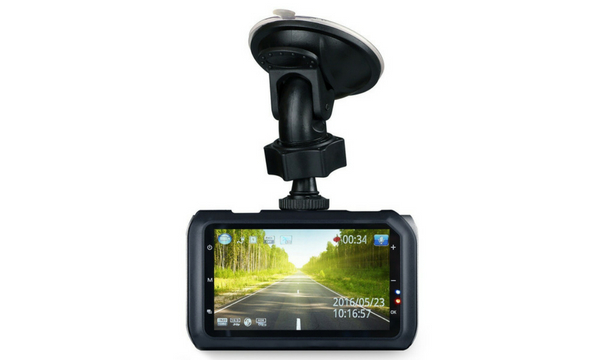
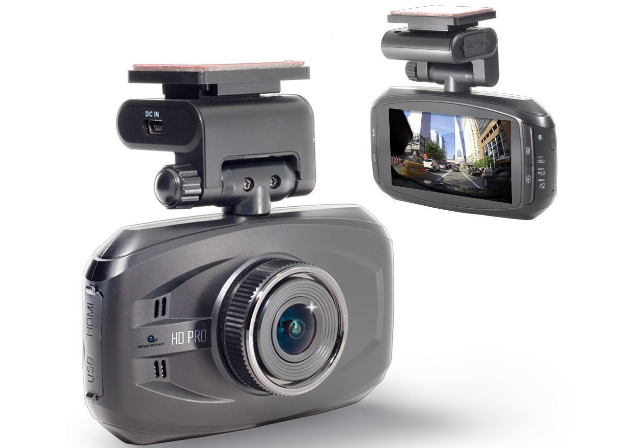
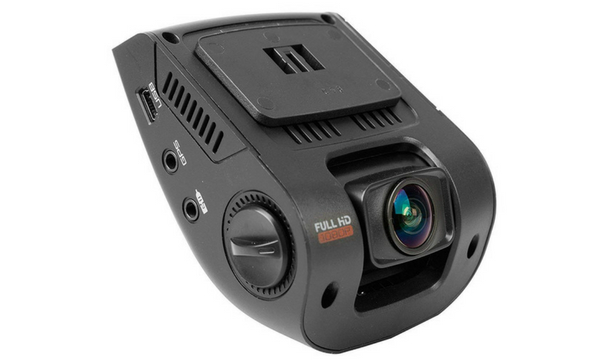
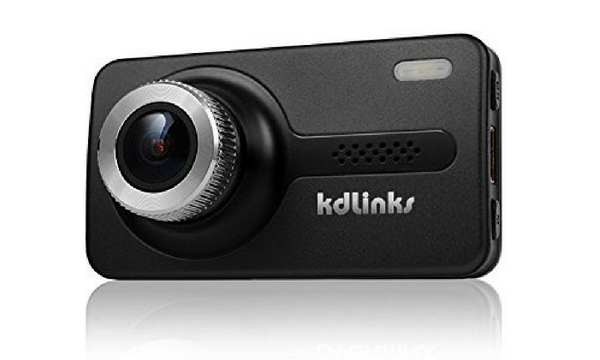
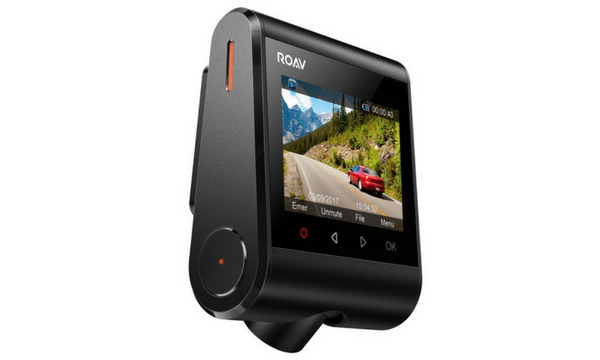
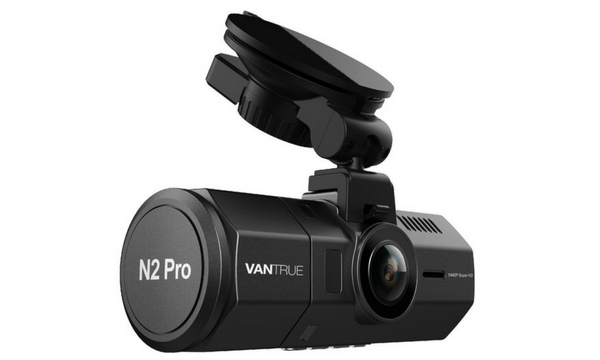
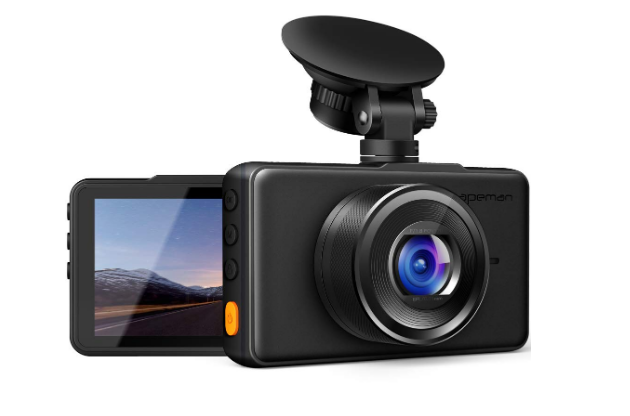
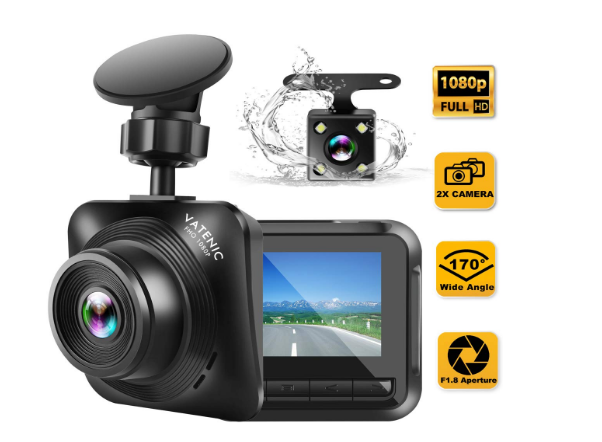
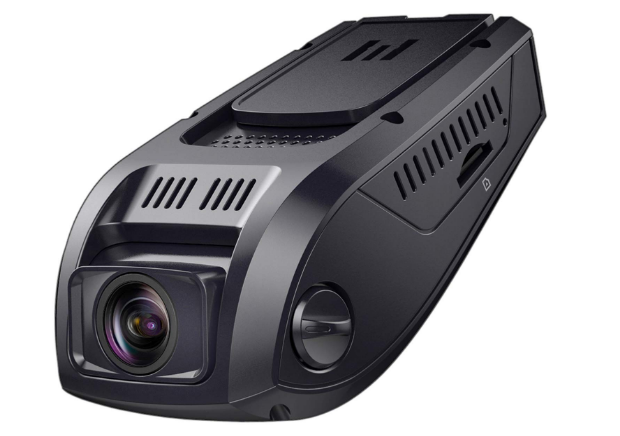


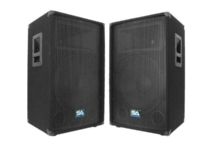

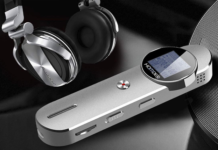






![Best Crochet Hooks for Beginners and Pros [2020 Update] best crochet books](https://www.awebtoknow.com/wp-content/uploads/2018/01/best-crochet-books-100x70.jpg)


